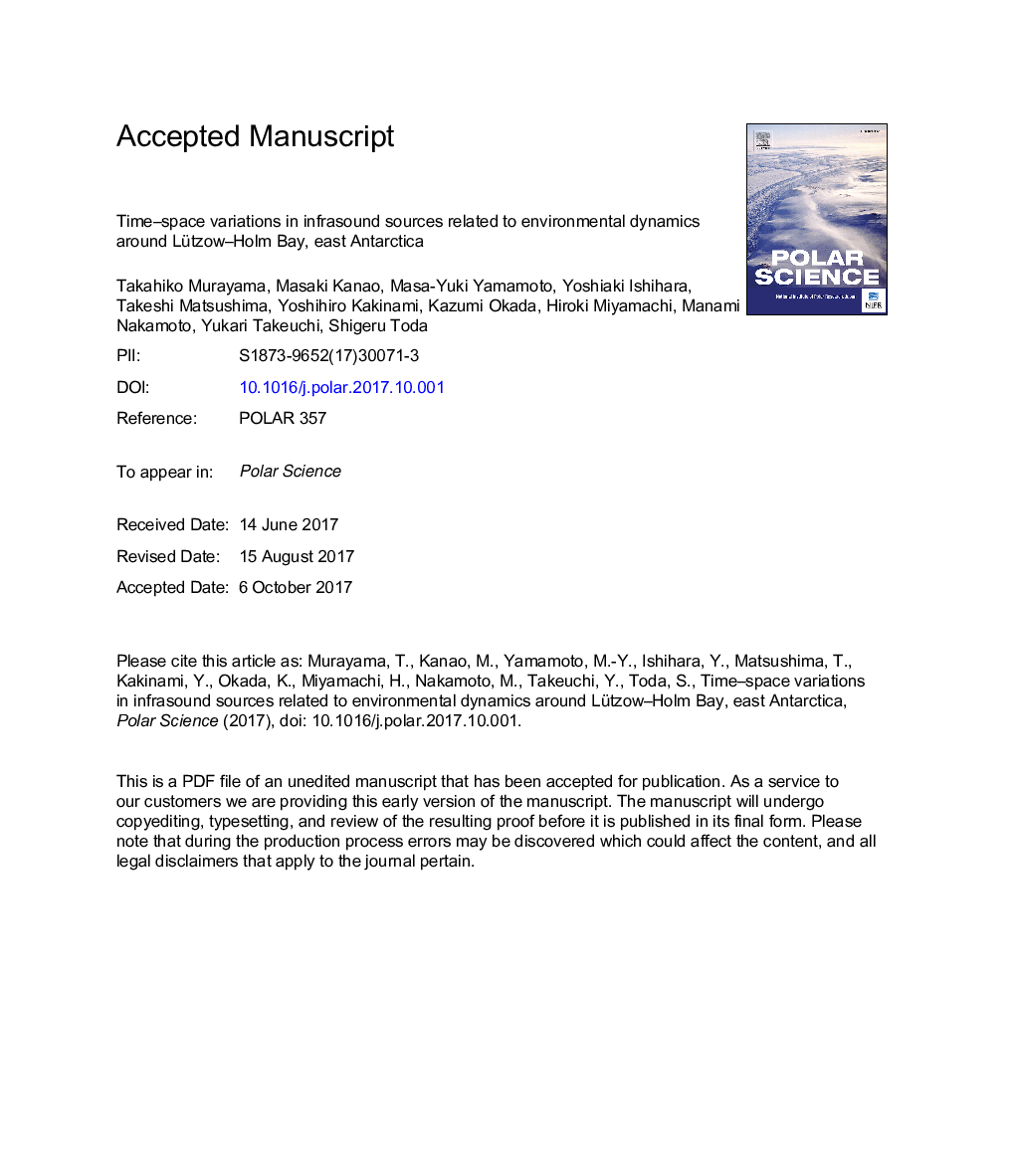| Article ID | Journal | Published Year | Pages | File Type |
|---|---|---|---|---|
| 8907828 | Polar Science | 2017 | 31 Pages |
Abstract
Characteristic features of infrasound waves observed in the Antarctic reflect the physical interaction between the surface environment along the continental margin and the surrounding Southern Ocean. The temporal-spatial variability of the source locations for infrasound excitation during the eight-month period between January and August 2015 was investigated using recordings made by two infrasound arrays deployed along a section of the coast of Lützow-Holm Bay (LHB), Antarctica. The infrasound arrays clearly detected temporal variations in frequency content and propagation direction during this period. A number of infrasound sources were identified, many located north of the arrays. Many of the events had a predominant frequency content of a few Hz, higher than microbaroms from the ocean. A comparison of the results with MODIS satellite images indicated that these infrasound sources were ice-quakes associated with the calving of glaciers, the breaking off of sea ice, and collisions between this sea ice and icebergs around the LHB. Continuous measurements of infrasound in the Antarctic may serve as a proxy for monitoring the regional surface environment in terms of climate change at high southern latitudes.
Related Topics
Physical Sciences and Engineering
Earth and Planetary Sciences
Earth and Planetary Sciences (General)
Authors
Takahiko Murayama, Masaki Kanao, Masa-Yuki Yamamoto, Yoshiaki Ishihara, Takeshi Matsushima, Yoshihiro Kakinami, Kazumi Okada, Hiroki Miyamachi, Manami Nakamoto, Yukari Takeuchi, Shigeru Toda,
